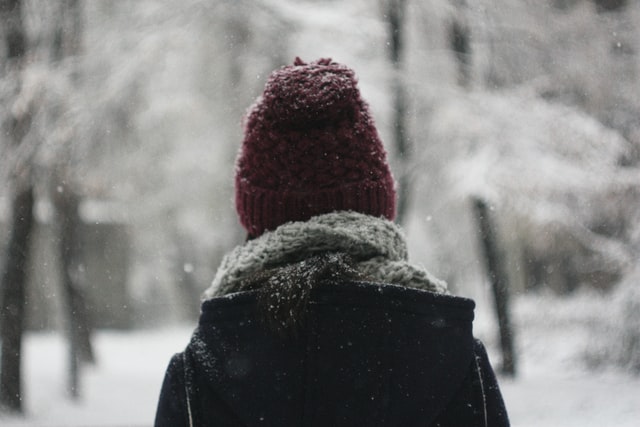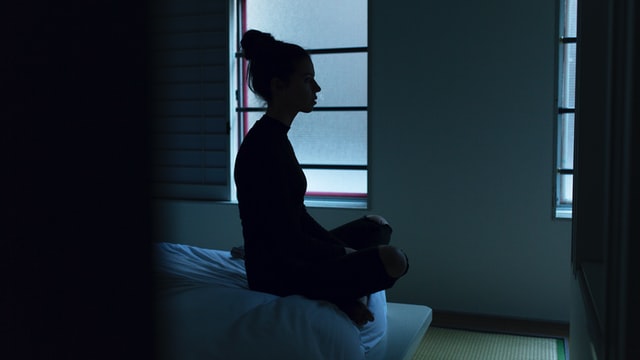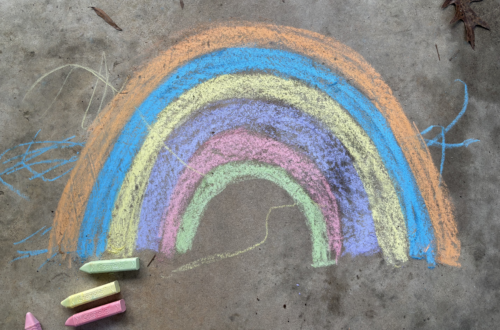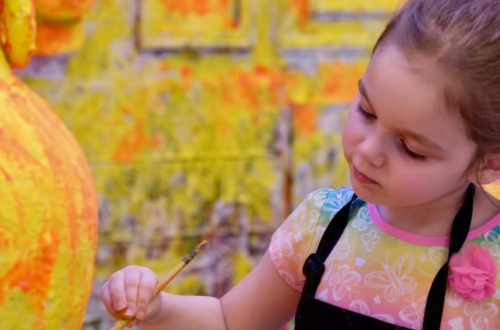
Brighten Your Mood: 5 Natural Treatments for Seasonal Affective Disorder
Natural Treatments for Seasonal Affective Disorder
A version of this article was originally written and published through Psychology Today. Find this blog post and other holistically minded mental-health articles here.
What is Seasonal Affective Disorder?
Do you experience mood fluctuations, appetite changes, or decreased energy levels as winter approaches? Ever find yourself staying in bed for most of the day, attempting to hibernate the cold months away? If so, you could be suffering from Seasonal Affective Disorder (or SAD), which is a type of depression that correlates with the changing seasons, usually beginning in the fall and lasting through the winter (1).
Now, around this time each year, it’s not uncommon to want to stay in your P.J’s and watch Netflix all day. Having the munchies and gaining a few pounds here and there also isn’t too far off from the norm, especially during the holidays. Even slight changes in mood, including the “winter blues” is common. In contrast, people with SAD experience very serious forms of clinical depression which tends to increase as the winter progresses.
Not to mention, as COVID-19 continues to increase levels of stress and anxiety, many people are finding the winter months increasingly difficult. During these months, it’s important to prioritize self-care and healthy coping strategies in response to any stress and uncertainty that may persist.

Here are some common symptoms of SAD:
- Feeling depressed for the majority of the day, most days out of the week
- Losing interest in activities you once enjoyed
- Having low energy and problems with sleeping
- Experiencing changes in your appetite or weight
- Increased feelings of agitation or irritability
- Poor concentration
- Feeling hopeless, worthless or guilty
- Having frequent or increased thoughts of death or suicide
If you’re struggling with any of these symptoms, know that you’re not alone. Millions of American adults may suffer from SAD, with many remaining undiagnosed and untreated (NIMH). Statistically speaking, women are more likely to be affected by SAD than men.
Medications can be helpful in treating serious cases of SAD, but there are drug free treatments for seasonal affective disorder that don’t require a prescription. Here are a few to consider:
(Remember to talk with your medical provider before making any changes or adjustments to your treatment)
- Light Therapy
- St. John’s Wort
- Vitamin D
- Cognitive behavioral therapy for SAD
- Exercise
Natural Treatments for Seasonal Affective Disorder
1. Light Therapy
Bright light therapy (BLT) has proven to be effective in a number of studies, and is now recognized as a first-line treatment for SAD patients (2). More recently, BLT has also been used as an experimental treatment for non-seasonal depression and other psychiatric disorders.
BLT was first introduced in a study by Rosenthal et al. in 1984. Researchers discovered that SAD patients who were exposed to a bright white light showed a reduction in depressive symptoms over the course of the study (3). Patients were subjected to bright white, full-spectrum fluorescent light of 2,500 lux for 3 hours at dawn and 3 hours at dusk for two weeks. Researchers observed a significant anti-depressant effect (as measured by the Hamilton Depression Rating Scale) within the first 3-7 days of treatment.
Since this study, researchers and practitioners have continued to optimize the use of BLT in treating SAD. In general, it is recommended that patients are exposed to bright light early in the morning using a device called a light box. Clinically tested light boxes usually sell for about $150.00, although there are some less expensive options that include lamps and desk lights. Further research is needed to determine whether these devices are as effective as the traditional light boxes.
Here are some things to consider when choosing a light box/lamp:
- Select a light with an exposure to 10,000 lux of light, while emitting as little UV light as possible
- Use the light for about 20 – 30 minutes within the first hour of waking up in the morning
- Keep the light at a distance of about 16 to 24 inches (41 to 61 centimeters) from the face
- Keep your eyes open, but don’t look directly at the light
2. St. John’s Wort
St. John’s Wort is an herb that has been used in traditional European medicine since the ancient Greeks. It has been promoted as an alternative treatment for a variety of health and mental health conditions, including depression, menopausal symptoms, OCD, and even ADHD.
The research around St. John’s wort and its effectiveness is limited, and at times, controversial. Results are often mixed, as some studies claim that St. John’s Wort is no more effective than placebos in treating depression (4). Yet, other studies claim that SSRI’s and St. John’s Wort are similarly effective in reducing symptoms of depression.
While the research at large can’t seem to agree quite yet, a more recent review demonstrated that both St John’s wort extract and SSRIs are effective in treating mild-to-moderate cases of depression (5). Authors also observed lower incidents of adverse side effects and withdrawal symptoms from St. John’s extract, compared to SSRI’s. As a result, they concluded that St. John’s wort is a safer option compared to traditional SSRI’s, in regards to side effects, discontinuation problems, etc.
If you’re considering a trial of St. John’s wort to help manage depressive symptoms, make sure you do not combine it with any other psychiatric medications. Speak with your provider about the safety of combining St. John’s wort with any other medications you are taking. St. John’s wort can weaken the effects of many medications, and can cause serious serotonin-related side effects if combined with other SSRI’s.
3. Vitamin D
Although researchers cannot definitively claim that vitamin D supplementation is helpful in relieving SAD symptoms, low levels of vitamin D, either from a dietary deficiency or limited sunlight, have been found in people with SAD (6).
According to a team of researchers at the University of Georgia, vitamin D deficiency can play a role in the development of SAD (7). Authors discuss how vitamin D levels fluctuate in the body seasonally, in direct relation to seasonally available sunlight. Vitamin D is also involved in the regulation of serotonin and dopamine, both of which can be linked to depression. Studies have also demonstrated that depressed patients commonly have lower levels of Vitamin D.
Researchers discuss the importance of maintaining adequate levels of vitamin D, not only for our physical health, but mental health. This doesn’t necessarily mean we need to run off and purchase large amounts of expensive vitamin D supplements. According to Kimlin, “A few minutes of sunlight exposure each day should be enough for most people to maintain an adequate vitamin D status” (7). Vitamin D supplementation may be helpful for some, although you may feel just as good (if not better) by simply increasing your time in the sun, especially during the winter months.
4. Cognitive Behavioral Therapy
Cognitive behavioral therapy (CBT) is a type of psychological treatment that helps to treat a wide range of mental health related problems, including SAD.
Dr. Kelly Rohan, a professor, researcher, and expert in SAD, developed a SAD-tailored version of CBT, modeled after Beck’s traditional cognitive therapy (8). The CBT for SAD protocol includes 90 minute sessions delivered twice weekly over six weeks, for a total of 12 sessions in a group format. Sessions focus on helping patients develop skills to improve their coping strategies through the changing seasons. This often includes scheduling pleasurable activities every day during the winter, and identifying and challenging negative thoughts that accompany SAD symptoms. Patients are encouraged to start applying skills before symptoms start each year, usually early in the fall, to prevent from falling back into old patterns that contribute to depression.
If you’re struggling with symptoms of SAD, consider reaching out to a mental health therapist who can help you process and challenge any negative thought patterns that may worsen with the holidays or changing seasons. Get into a habit each day of engaging in at least one enjoyable activity. What’s something that would motivate you, or encourage you to get out of the bed each morning? Is there a new hobby you’ve always wanted to start? Now’s the time, if any, to take that next step.
5. Exercise
It’s no surprise that regular exercise is good for our health and mental health. However, the importance of exercise may not be adequately understood or appreciated by patients or providers, and evidence suggests that exercise may be a neglected intervention in mental health care (9).
Aerobic exercise (jogging, walking, swimming, cycling, gardening, dancing) has been shown to improve one’s mood and reduce symptoms of anxiety and depression (10). And you don’t have to join an expensive gym or run 5 miles (or run at all!) to obtain these benefits. Simply 30 minutes of moderate intensity exercise (such as brisk walking) for 3 days out of the week is sufficient. The 30 minutes can also be broken up into smaller time frames throughout the day (such as three 10 minute walks).
In a previous study, Pinchasov et al. compared light therapy to aerobic exercise for one week during the afternoon, in a small sample of women with SAD (11). Both exercise and light therapy were associated with significant reductions in depressive symptoms and increased rates of oxygen consumption compared to the untreated control group. This suggests that daily energy expenditure may underlie the effectiveness of both treatments.
In addition, aerobic exercise performed under bright (2,500 – 4,000 lux) light appears to be more beneficial than indoor lighting. Outdoor exercise, or combining aerobic exercise with light therapy, seems to be ideal. In “light” of this, consider blowing up those deflated bike tires, move your yoga mat outside, or schedule daily walks on your lunch break.
If you or someone you love is struggling, don’t hesitate to reach out for help. There are several creative, and evidence-based options for Seasonal Affective Disorder. Remember to take each day at a time, and eventually, this season, as do all others, will pass.
*If you or someone you know ever feels like harming themselves, call the National Suicide Prevention Hotline at 800-273-TALK (8255).

References:
- Seasonal Affective Disorder. Accessed on 12/21/2020 from: https://www.mayoclinic.org/diseases-conditions/seasonal-affective-disorder/symptoms-causes/syc-20364651
2. Campbell, PD, Miller, AM, & Woesner, ME. Bright Light Therapy: Seasonal Affective Disorder and Beyond. The Einstein journal of biology and medicine : EJBM. 2017; 32, E13–E25.
3. Rosenthal NE, Sack DA, Gillin JC, Lewy AJ, Goodwin FK, Davenport Y, … Wehr TA. Seasonal affective disorder. A description of the syndrome and preliminary findings with light therapy. Arch Gen Psychiatry. 1984; 41(1), 72–80.
4. National Center for Complementary and Integrative Health. 2020; Retrieved on December 29, 2020 from: https://www.nccih.nih.gov/health/st-johns-wort
5. Cui, YH, Zheng, YA. meta-analysis on the efficacy and safety of St John’s wort extract in depression therapy in comparison with selective serotonin reuptake inhibitors in adults. Neuropsychiatric disease and treatment, 2016; 12, 1715–1723. https://doi.org/10.2147/NDT.S106752
6. National Center for Complementary and Integrative Health. Seasonal Affective Disorder. 2019; Retrieved on December 28, 2020 from: https://www.nccih.nih.gov/health/seasonal-affective-disorder
7. University of Georgia. Vitamin D deficiency, depression linked in international study. ScienceDaily. 2014; Retrieved December 27, 2020 from www.sciencedaily.com/releases/2014/12/141202111148.htm
8. Roecklein KA, Rohan KJ. Seasonal affective disorder: an overview and update. Psychiatry (Edgmont). 2005;2(1):20-26.
9. Callaghan P. Exercise: a neglected intervention in mental health care? J Psychiatr Ment Health Nurs. 2004; 11:476–483.
10. Guszkowska M. Effects of exercise on anxiety, depression and mood [in Polish] Psychiatr Pol. 2004; 38:611–620.
11. Pinchasov BB, Shurgaja AM, Grischin OV, Putilov AA. Mood and energy regulation in seasonal and non-seasonal depression before and after midday treatment with physical exercise or bright light. Psychiatry Res. 2000;94:29–42.




